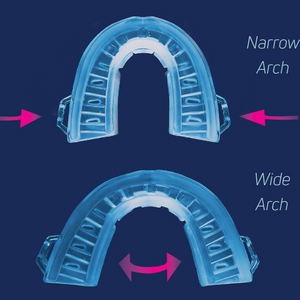Oct 16, 2025
POSITIONS: SLEEP RIGHT FOR YOU HEALTH!
POSITIONS: SLEEP RIGHT FOR YOU HEALTH!
On your back, on your belly, right side, left side, elevated like in a recliner, standing up—well, let’s scratch that one because of the dangers of gravity. You may remember advice from your mother, brother or doctor; however, was their advice really correct for you? After all, we all are a little or a lot different in body types, anatomical strengths and weaknesses and with a variety of respiratory challenges. This article describes the health risks of each position of sleeping while recommending the best sleeping positions for you to adopt—and why.
Sleep quality isn’t just about comfort; it’s about blood circulation, breathing, and spinal support. Neglect any of these, and you’re starting a cascade of health issues. The best sleeping position really depends on your body’s needs and any health conditions you might have. Here’s a breakdown of the top contenders:
WHY IS SIDE SLEEPING SO POPULAR?
-
Side sleeping is generally the healthiest for most people.
-
It helps reduce snoring and sleep apnea by keeping airways open.
-
Sleeping on one’s left side tends to be ideal for digestion, acid reflux, and pregnancy.
-
The right side may benefit heart health and reduce anxiety.
-
Some research indicates that side sleeping may preserve cognitive capacity longer for people who are prone to dementia.
-
During pregnancy, side sleeping enhances circulation to the fetus and reduces pressure on organs.
SIDE SLEEPING WITH A PILLOW BETWEEN YOUR KNEES
-
This is the top choice for spinal alignment, reducing the chances for derangement and hip and back pain.
-
It keeps hips, pelvis, and spine in a neutral position.
-
It reduces pressure on lower back
-
If you have a small waist which leaves a gap between your body and the mattress, you can add a small pillow to the gap.
A downside of side sleeping is that it sometimes triggers shoulder pain or numbness, depending on the presence of shoulder arthritis, nerve impingement, or weak shoulder muscles. Prolonged pressure can bring inflammation, which sends pain signals to the brain.
WHAT ABOUT BACK SLEEPING?
-
Keeps the spine aligned and reduces pressure on joints.
-
Good for preventing wrinkles and acne (your face isn’t squished into a pillow!)
-
Can worsen snoring and sleep apnea due to gravity’s pulling the tongue backward, causing airway obstruction.
IS BELLY SLEEPING OK?
-
Sleeping face down on your belly is the least recommended by experts.
-
It may help with snoring, but often causes neck and back pain.
-
It can misalign the spine and lead to poor sleep quality.
-
The pressure on one’s face can increase facial wrinkles and even eye pressure (linked to glaucoma).
WHEN IS ELEVATED OR PROPPED-UP SLEEPING GOOD?
-
Sleeping with torso and head propped upward is useful for congestion or acid reflux simply because of utilizing gravity to keep the fluids down.
-
Propping up your head can reduce sinus pressure and postnasal drip.
IS THE FETAL POSITION GOOD?
-
The fetal position gives many people a sense of security and coziness. Curled-up side sleeping is common, especially among women.
-
It’s good for back pain, pregnancy, and sleep apnea.
-
Curling too tightly can restrict breathing and cause stiffness.
WHAT ARE THE STARFISH AND SOLDIER POSITIONS?
-
The starfish position shows arms up and legs spread (“spread eagle”), similar to making a “snow angel.” It may help with shoulder pain and reduce tossing and turning; however sleeping with hands above one’s head is risky business for nerve and blood flow through shoulders and arms.
-
The solder position—arms at sides—can worsen snoring but helps with acid reflux if the head is elevated.
SCIENCE SAYS SLEEPING POSITION CAN AFFECT YOUR HEALTH
-
Sleep apnea: Back sleeping worsens symptoms; side sleeping improves them.
-
Pregnancy: Supine sleeping (face up) is linked to lower birthweight and higher apnea index.
-
Spinal pain: Poor posture during sleep correlates with more frequent position changes and lower sleep quality.
-
Metabolism: Sleep quality (influenced by position) affects weight and fat distribution.
There’s no one-size-fits-all position, but side sleeping tends to offer the most benefits for breathing, digestion, and spinal health. If you’re dealing with specific conditions like sleep apnea, GERD, or pregnancy, adjusting your sleep posture can make a big difference.
SLEEPING POSITION AND SLEEP APNEA
Sleeping position plays a major role in how sleep apnea affects your breathing at night—especially with Obstructive Sleep Disorder (OSD), the most common type. Here's how different positions stack up.
-
Sleeping at an incline (e.g., with a wedge pillow or adjustable bed) can reduce apnea episodes.
-
It also helps gravity keep airways open and may improve oxygen levels
Positional Therapy is a legitimate treatment strategy. Some people use body pillows, wearable devices, or even tennis balls sewn into pajamas to avoid back sleeping. And for those with positional sleep apnea, switching to side sleeping can cut apnea episodes by up to 50%.
Sweet Dreams!







